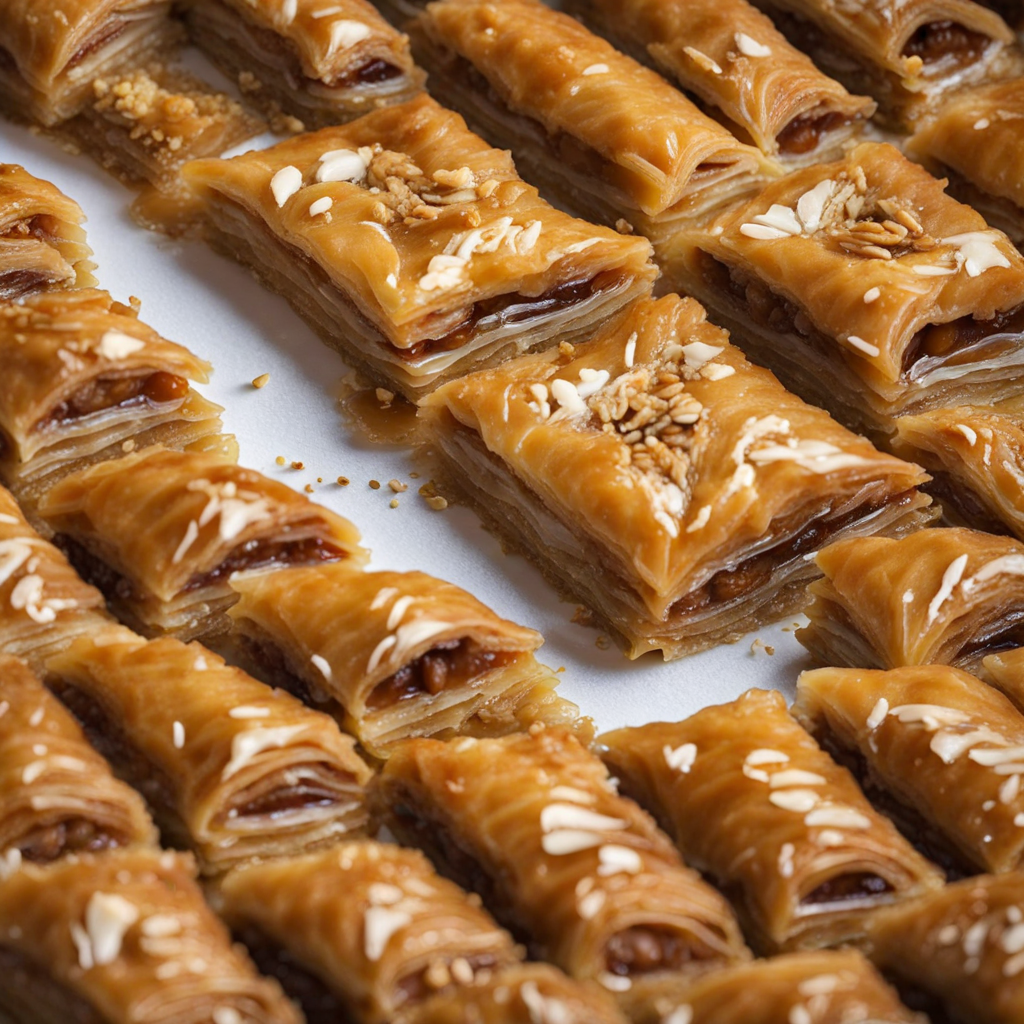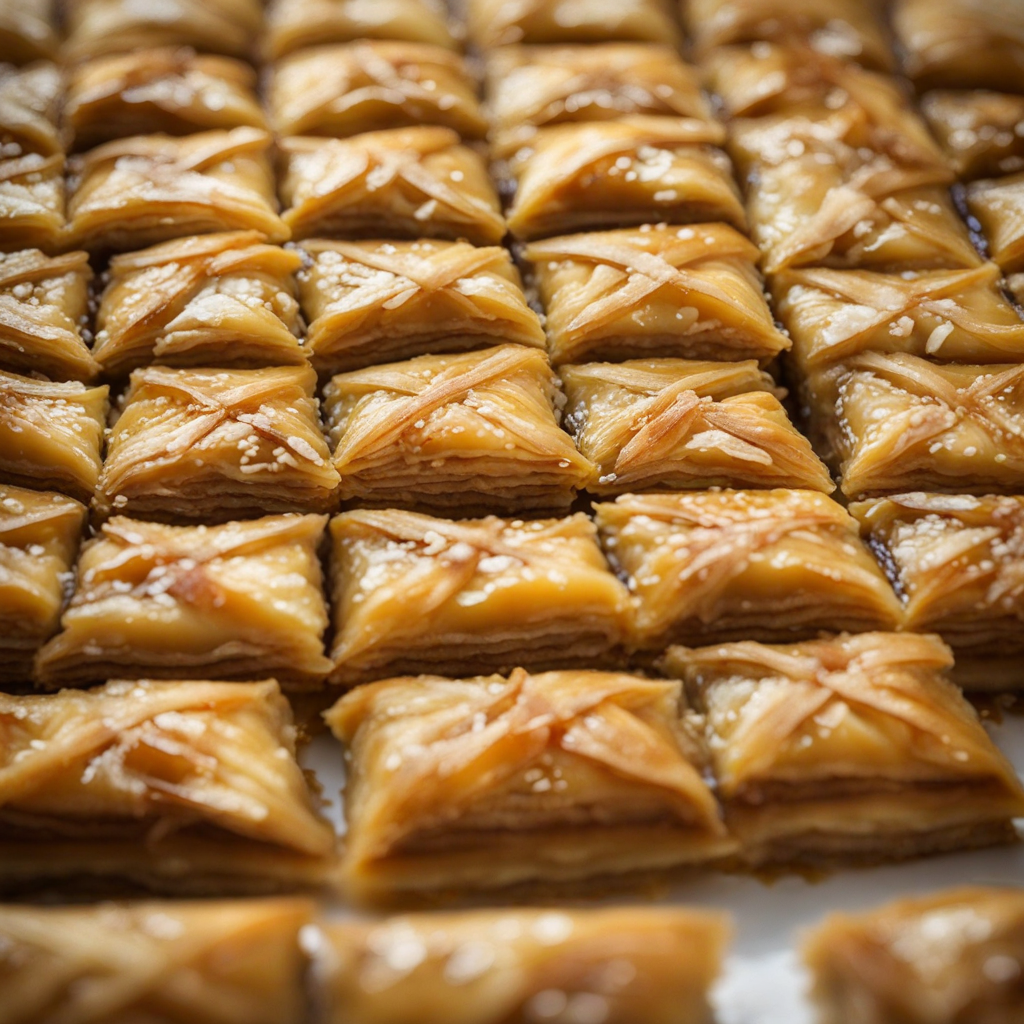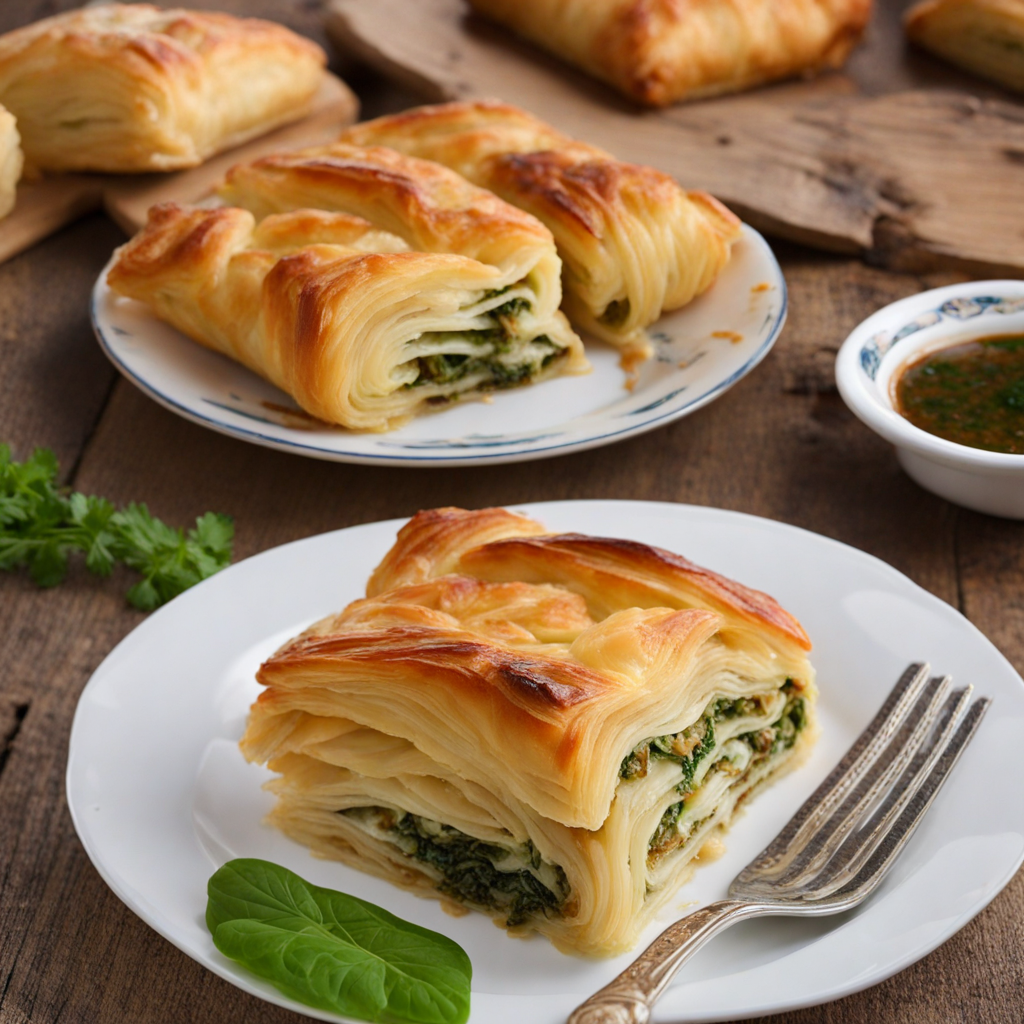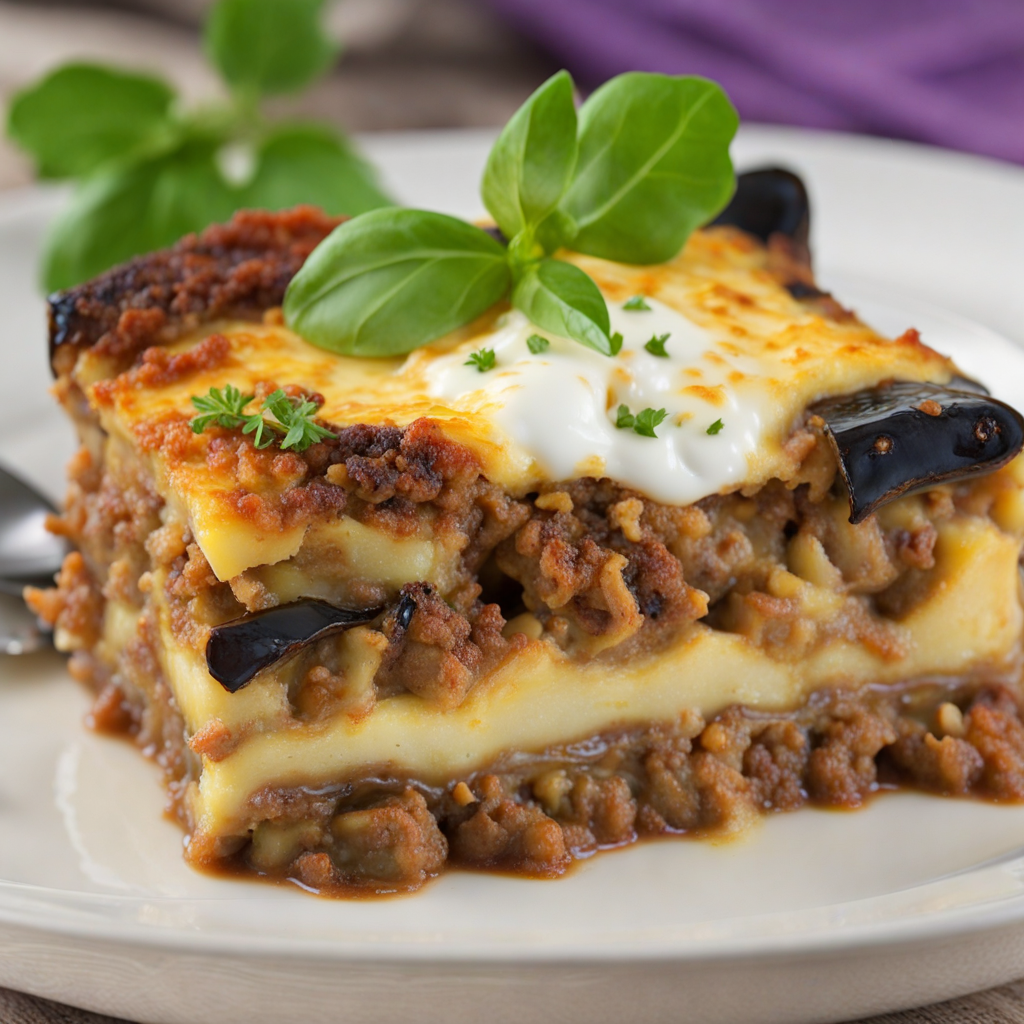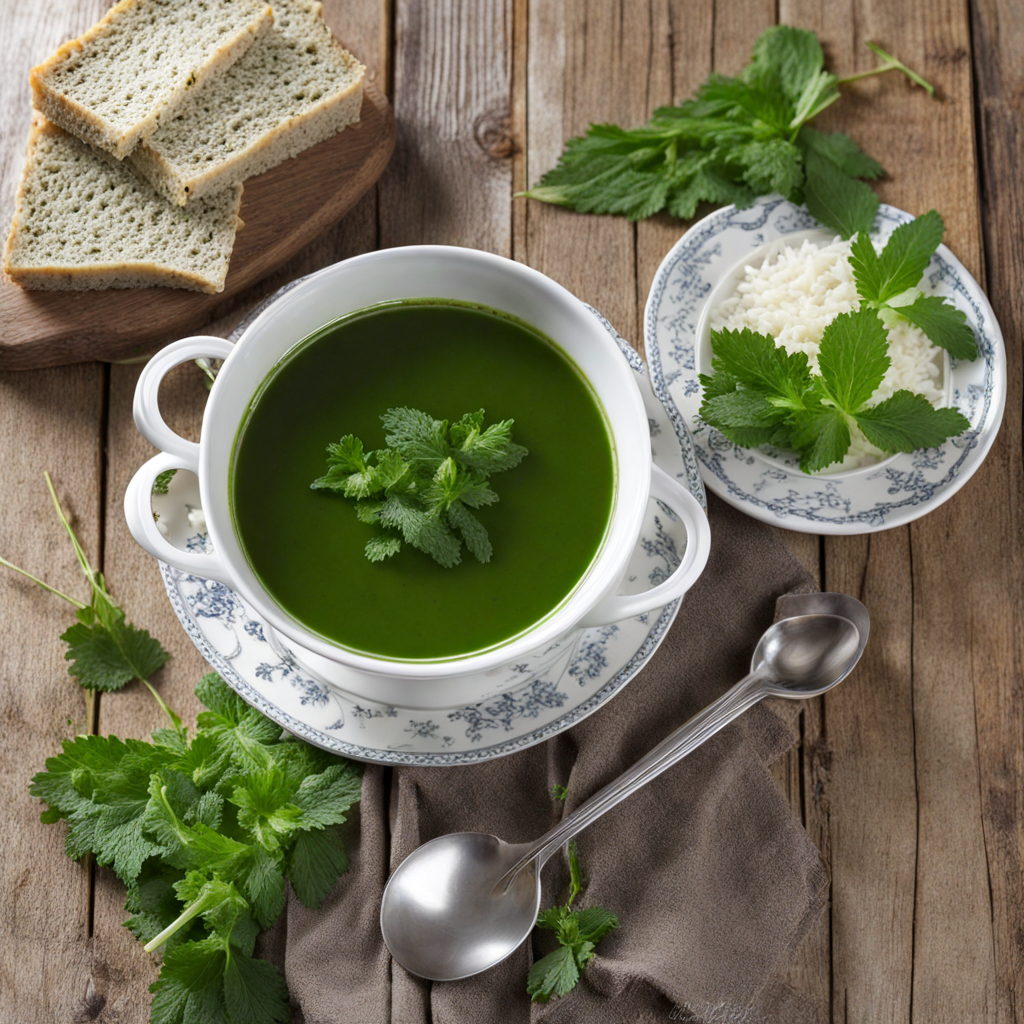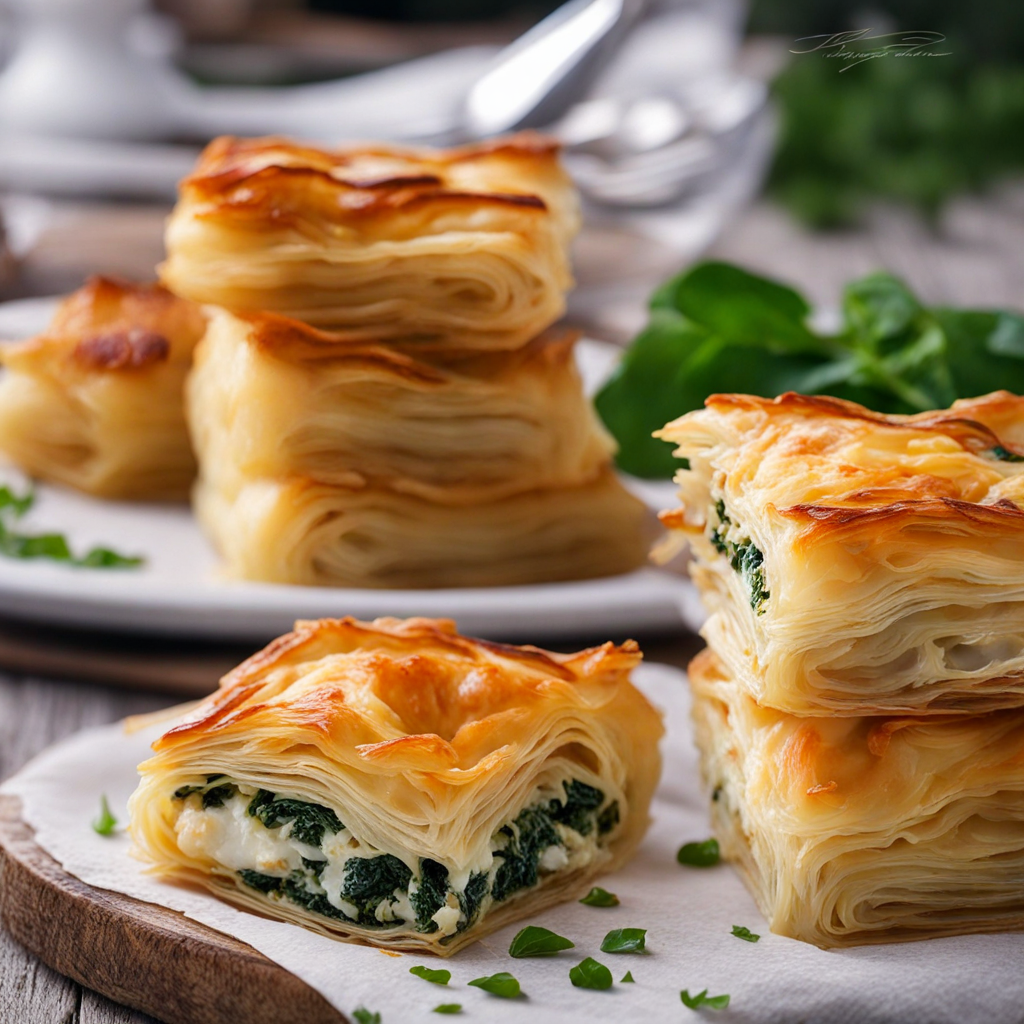Baklava
Baklava is a delectable pastry that has found its place in Bulgarian cuisine, showcasing a delightful combination of flavors and textures. This sweet treat is made from layers of thin, flaky phyllo pastry, which are meticulously brushed with melted butter to create a rich, golden crust. The layers are generously filled with a mixture of finely chopped nuts, typically walnuts or pistachios, and are sweetened with a blend of sugar and aromatic spices such as cinnamon. Each bite offers a satisfying crunch, followed by a melt-in-your-mouth experience as the layers unfold. To elevate its sweetness, baklava is often drenched in a syrup made from water, sugar, and lemon juice, infused with hints of rosewater or orange blossom. This syrup seeps into the layers of pastry, enhancing the flavors and adding a luscious moisture that contrasts beautifully with the crunchy nuts. The result is a harmonious balance of sweetness and nuttiness, with a hint of floral notes that linger on the palate. The syrup not only enriches the taste but also gives the baklava a glossy finish, making it as visually appealing as it is delicious. In Bulgaria, baklava is traditionally served during special occasions, celebrations, and festive gatherings, symbolizing prosperity and happiness. It is often cut into diamond or square shapes, making it easy to share and enjoy with friends and family. Each region may have its own twist on the recipe, incorporating local ingredients and variations, but the essence of baklava remains the same—a delightful indulgence that invites you to explore the rich tapestry of Bulgarian flavors.
How It Became This Dish
The Rich History of Баклава in Bulgaria Баклава, known as baklava in many regions, is a beloved pastry that embodies the rich culinary heritage of Bulgaria and the broader Balkan region. This sweet, multi-layered dessert made from filo pastry, nuts, and honey or syrup has a history steeped in cultural exchange, tradition, and evolution. To fully appreciate baklava, it’s essential to explore its origins, cultural significance, and development over time. #### Origins of Baklava The exact origins of baklava are somewhat murky, with several theories attributing its creation to various cultures across the Middle East and the Mediterranean region. Some historians link its ancestry to the Assyrians, who are believed to have layered dough with nuts and honey as early as the 8th century BCE. Others suggest that the modern version of baklava may have evolved from the Byzantine Empire, where a similar dessert called “Laganon” was made with layers of dough and honey. However, the most significant influence on baklava as we know it today came during the Ottoman Empire. The Ottomans expanded their culinary traditions throughout their vast empire, which included regions of the Balkans, the Middle East, and North Africa. The dessert became particularly popular in the courts of the sultans, where it was prepared by skilled chefs known as “aşçıbaşı” and served to nobility during lavish feasts and celebrations. The version of baklava that emerged from this era was often made with a variety of nuts, such as pistachios, walnuts, and almonds, and sweetened with honey or syrup flavored with rose or orange blossom water. #### Baklava in Bulgarian Culture Baklava found its way to Bulgaria during the Ottoman rule, which lasted for nearly five centuries, from the late 14th century until the late 19th century. The dessert became deeply ingrained in Bulgarian cuisine and culture, evolving to incorporate local ingredients and flavors. In Bulgaria, baklava is often made with walnuts, which are more readily available in the region, and flavored with cinnamon, a nod to the spices favored in Bulgarian desserts. Baklava is not just a dessert; it holds a significant place in Bulgarian celebrations and traditions. It is commonly served during major holidays such as Christmas, Easter, and weddings. The preparation of baklava often becomes a communal affair, with family members gathering to create this intricate dessert together, reinforcing bonds and passing down culinary traditions through generations. In Bulgaria, baklava is often associated with hospitality and generosity. Serving baklava to guests is a gesture of welcome and friendship, symbolizing the warmth of Bulgarian culture. The intricate layers of the pastry are said to represent the complexity of relationships and the sweetness of life, making it an ideal treat for special occasions. #### The Evolution of Baklava Over the years, baklava has evolved in Bulgaria, reflecting the changing tastes and culinary practices of the population. Despite its Ottoman origins, the Bulgarian version has developed a distinctive character. The use of local ingredients, such as Bulgarian walnuts and honey, gives the baklava a unique flavor profile that sets it apart from its counterparts in other countries. In contemporary Bulgarian cuisine, baklava is often made with a variety of fillings and syrups, showcasing the creativity of modern bakers. Some variations include chocolate baklava, which incorporates cocoa powder or melted chocolate into the nut filling, appealing to those with a sweet tooth. Others may use different types of nuts, such as hazelnuts or pecans, depending on regional availability and personal preference. While baklava remains a staple dessert for festive occasions, it has also found its way into everyday life. In urban areas, baklava can be found in bakeries and cafes, where it is enjoyed as a sweet treat with coffee or tea. This accessibility has helped to preserve the tradition while allowing it to adapt to modern lifestyles. #### Cultural Significance and Global Recognition Baklava’s cultural significance extends beyond Bulgaria. It is celebrated across the Balkans and the Middle East, each region adding its unique twist to this beloved dessert. In Greece, for example, baklava is often prepared with a honey syrup infused with lemon, while in Turkey, it is known for its delicate layers and generous use of pistachios. The variations in preparation and presentation highlight the diverse culinary heritage of the regions influenced by the Ottoman Empire. In recent years, baklava has gained international recognition, appearing in dessert menus worldwide. Food festivals, cultural events, and culinary competitions often feature baklava, showcasing its versatility and appeal. As a symbol of connection and cultural exchange, baklava serves as a reminder of the shared culinary traditions that transcend borders. #### Conclusion Baklava is more than just a dessert; it is a reflection of Bulgaria's rich history, cultural significance, and culinary evolution. From its ancient origins to its status as a beloved treat in Bulgarian households, baklava represents the intersection of tradition and modernity. Its layers, filled with nuts and sweetened with syrup, encapsulate the sweetness of Bulgarian hospitality and the depth of its cultural heritage. As baklava continues to evolve and adapt to contemporary tastes, it remains a cherished symbol of celebration, community, and connection. Whether enjoyed at a festive gathering or a casual family meal, baklava is a testament to the enduring legacy of culinary traditions that unite us all. Through this delightful pastry, one can taste the history of Bulgaria, the warmth of its culture, and the sweetness of its people.
You may like
Discover local flavors from Bulgaria


